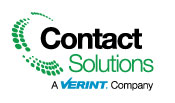When you think about your interactive voice response (IVR), leaks may not come to mind. You are probably more concerned about costs, the customer experience (CX), and system efficiency and uptime. But make no mistake, IVRs may develop leaks just like your pipes – and these steady drips can affect cost, CX, efficiency and more.
Leak prevention isn’t just for plumbing anymore

Let me explain.
A key goal of an IVR is to streamline customer interactions by providing automated, self-service functionality that helps to minimize reliance on expensive, live contact center agents. The better an IVR works – with adaptive personalization, for example – the more often customers will use self-service to conduct transactions, obtain information, update records, and so on.
A virtuous circle
This creates an IVR virtuous circle: greater reliance on self-service gives customers the speed, flexibility and control they want, improving CX and reducing agent costs.
Unfortunately, commodity IVRs may underperform, causing more customers to request agent assistance. Instead of optimizing automation, the system begins to “leak” a lot of calls, adding to the agents’ workload, extending call duration, frustrating callers and adding costs.
You end up with a vicious circle.
Here’s an example.
Let’s compare two systems – one a free, commodity IVR product and the other a paid, adaptive IVR solution. Both handle 1 million calls per month.
- The commodity IVR has a self-service usage rate of 85%, meaning that it transfers 15% of calls to a live agent.
- At 90% self-service, the adaptive IVR does a better job, transferring only 10% of calls to an agent.
Here’s how it breaks down:
- With 85% self-service: Assuming an agent cost of $35 per hour, the commodity IVR, which “leaks” 760,000 minutes of agent time per month, racks up costs of $448,400.
- With 90% self-service: The adaptive IVR has a transfer rate of only 10%, so agent involvement is less -- 506,667 minutes per month. The cost savings: nearly $150,000.
-
The commodity IVR accrues $25,425 per month in telecomm charges, while the adaptive IVR only uses $22,450, a savings of about $3,000.
-
Even though the adaptive IVR costs $4.20 per hour to operate, and the commodity product is free, those leaks still tip the balance.
***********************
Bottom line?
By increasing self-service by just 5%, the adaptive IVR ends up saving more than a million dollars every year.
***********************
More than money
Those are just the hard numbers. There are many other benefits from a powerful, feature-rich, adaptive, “low leak” IVR solution, including a better experience and higher satisfaction among customers and agents.
It’s the old story: you get what you pay for.
All IVRs are not created equal. Some have invisible leaks!



